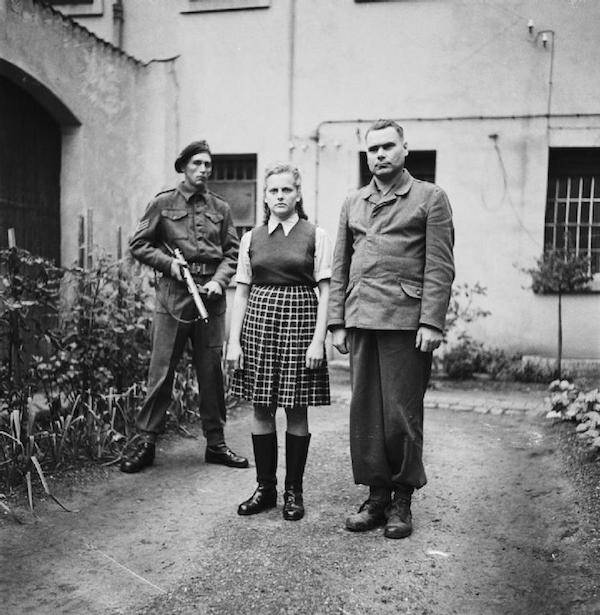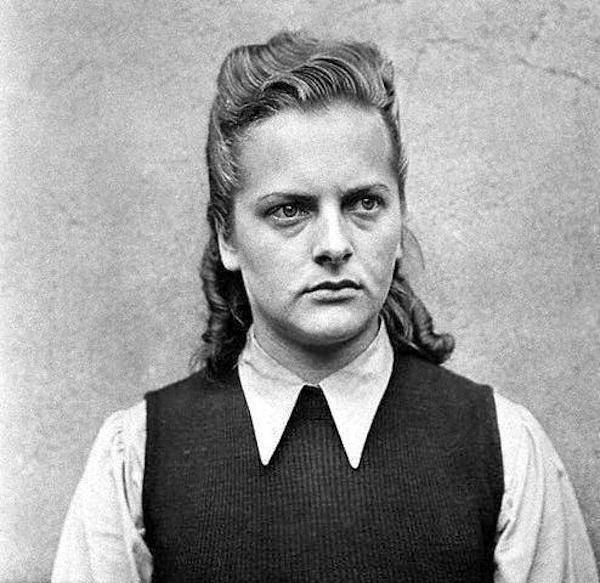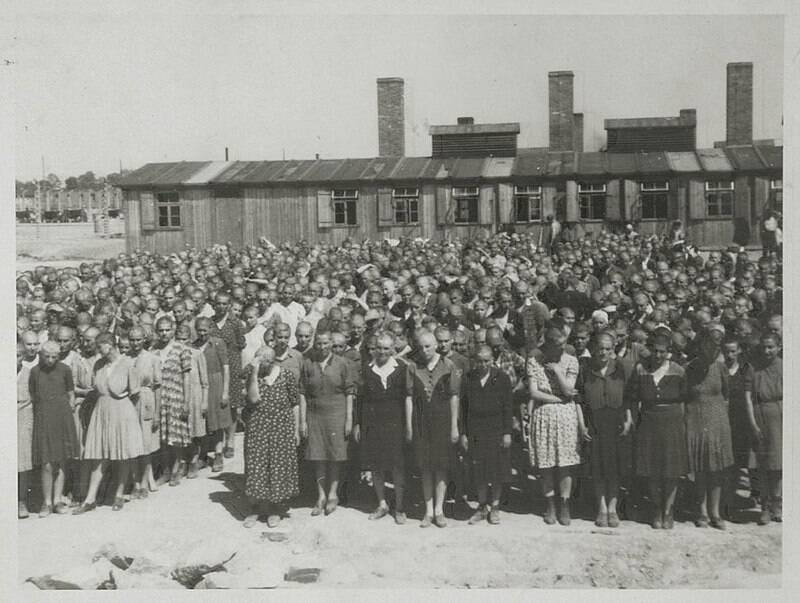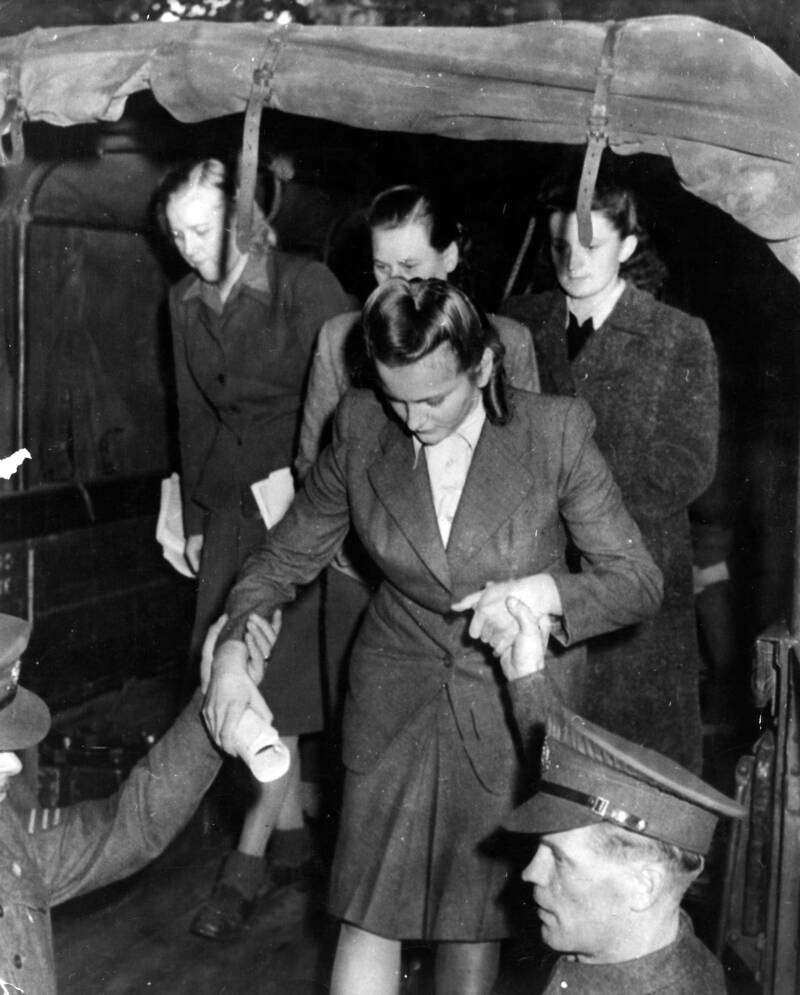In the dark annals of Nazi Germany, few names evoke as much horror as Irma Grese, a young woman whose cruelty earned her the chilling moniker “Hyena of Auschwitz.” Executed at the age of 22, Grese was the youngest Nazi war criminal to face the gallows after World War II, her brief life leaving a legacy of unimaginable brutality. From her unassuming beginnings to her reign of terror in the death camps, this is the story of how a school dropout became one of history’s most notorious figures.

A Troubled Beginning
Born on October 7, 1923, in the small German village of Wrechen, Irma Grese was the third of five children in a seemingly ordinary family. Yet, beneath the surface, her childhood was marked by turmoil. Described by her sister Helene as timid and unable to stand up to bullies, Grese endured severe harassment at school, leading her to drop out at a young age. “In 1938, I left elementary school and worked on agricultural jobs for six months, then in a shop in Luchen,” Grese later testified at her trial.

Tragedy struck when Grese was just 12 or 13, as her mother took her own life after discovering her husband’s infidelity. This loss left a profound mark on the young girl, who soon sought purpose in the rising tide of Nazi ideology. By her late teens, Grese’s path took a dark turn. After failing to secure a nursing position due to her limited education, she was sent by the Labour Exchange to Ravensbrück, a concentration camp for women, in July 1942. Though she claimed reluctance, Grese quickly embraced the power and cruelty that defined her role.
The Hyena of Auschwitz
In March 1943, Grese was transferred to Auschwitz, the epicenter of the Nazi death machine. There, her transformation into a sadistic overseer was complete. Rising swiftly to the rank of Senior SS-Supervisor, the second-highest-ranking female guard, she wielded authority over thousands of female prisoners. At its peak, she oversaw 18,000 women, her every whim dictating their fate. Grese’s cruelty was not just methodical—it was personal, laced with a sadistic glee that horrified even her fellow Nazis.
Survivors’ testimonies paint a chilling picture. Olga Lengyel, in her memoir Five Chimneys, described Grese’s jealousy-driven selections for the gas chambers, targeting beautiful prisoners out of spite. Grese’s violence was relentless: she whipped prisoners, set her dog on them, and kicked them with her jackboots until they bled. Polish survivor Daniel Szafran recalled witnessing Grese shoot two girls who attempted to escape a gas chamber selection. Hungarian survivor Ilona Stein recounted Grese’s savage beating of a mother who dared approach the camp’s dividing wire to speak to her daughter, leaving her face swollen and unrecognizable.

Grese’s depravity extended beyond physical abuse. Reports suggest she engaged in sexual violence, forcing young Jewish girls to act as lookouts while she assaulted inmates. Her rumored affairs with notorious figures like Josef Mengele only deepened her infamy. The “Hyena of Auschwitz” became a symbol of unchecked power, her cruelty as unpredictable as it was merciless.
The Fall of a Monster
As the Allies closed in on Nazi Germany, Grese’s reign of terror unraveled. Transferred to Bergen-Belsen in March 1945, she continued her brutal oversight until British forces liberated the camp in April. Arrested amidst the chaos, Grese faced trial for her crimes. Despite her pleas of innocence, the overwhelming testimonies of survivors—detailing beatings, shootings, and sadistic abuse—sealed her fate. She was convicted and sentenced to death, one of three female guards at Bergen-Belsen to face execution.

On December 13, 1945, Grese’s life ended on the gallows. Executioner Albert Pierrepoint described her final moments: “She stood on the trap very firmly, and as I placed the white cap over her head, she said in her languid voice, ‘Schnell.’ (‘Quickly.’)” At just 22, Irma Grese became the youngest woman executed under British law in the 20th century, her death closing a chapter of unimaginable horror.
A Legacy of Evil
Buried in Zum Friedhof Wehl in Hameln, Germany, Irma Grese remains a haunting figure in Holocaust history. Her youth and ferocity challenge simplistic narratives of evil, raising questions about how an ordinary girl could become a monster. While some accounts of female Nazis are tinged with stereotypes, the consistent survivor testimonies leave no doubt: Grese’s cruelty was real, deliberate, and devastating.

The story of Irma Grese is a grim reminder of the depths to which humanity can sink when ideology and power corrupt. Her smile, as she sent thousands to their deaths, lingers as a chilling testament to the horrors of the Holocaust—a legacy that must never be forgotten.



